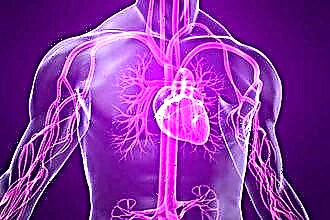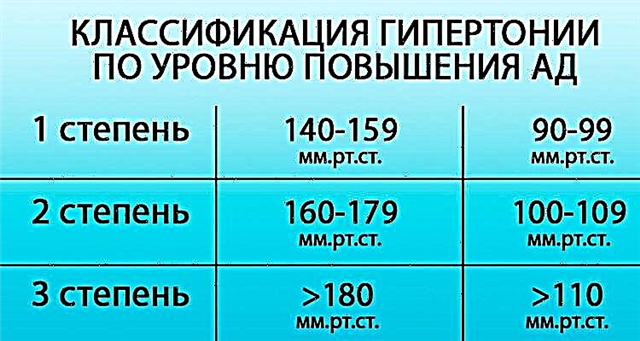Tympanoplasty is an operation during which exudate is sucked out of the middle ear cavity and the anatomical position of the auditory ossicles is restored. The procedure ends with myringoplasty, i.e. reconstruction of the ear membrane, due to which the auditory function is normalized.
The volume of surgical measures and the time of the operation are determined by the degree of damage to the main sections of the sound-conducting system. In the presence of relatively small lesions in the ossicle chain, hearing is completely restored. If persistent perforations provoked by purulent inflammation are observed in the ear membrane, partial or complete elimination of hearing loss is possible in 60-75% of cases.
Indications and contraindications

Can the eardrum be repaired after it has perforated? The ear membrane is prone to self-healing, but only in the presence of so-called dry perforation. If the holes result from suppuration from the middle ear, the regenerative capacity of the tissues is reduced. This leads to the development of permanent perforations and the development of conductive hearing loss.
According to otosurgeons, ear surgery (tympanoplasty) can eliminate most of the pathologies that occur when the hearing aid is damaged. Direct indications for surgery are:
- purulent otitis media;
- conductive hearing loss;
- tympanosclerosis;
- perforation of the membrane;
- mesotypmanite;
- polyps in the ear cavity;
- fibrosis of the middle ear.
Like most types of surgical intervention, tympanoplasty has a list of contraindications:
- purulent complications;
- acute inflammation in the ear;
- brain abscess;
- auditory tube abnormalities;
- allergy at the stage of exacerbation;
- septicopyemic complications;
- upper respiratory tract infection.

Untimely operation can cause brain abscess, large vein thrombosis and development of labyrinthitis.
Forms of operated pathologies
Inflammatory processes in the organ of hearing lead to damage not only to soft tissues, but also to bone structures, which include the auditory ossicles and mastoid cells. Their destruction entails the development of severe complications, in particular mastoiditis and sepsis. In medical practice, all types of ear pathologies amenable to surgical treatment are usually divided into 4 groups:
- dry perforation of the ear membrane is a relatively mild form of pathology characterized by perforation of the ear membrane without the release of serous or purulent exudate from the auditory canal;
- meso- and epitympanitis - diseases accompanied by catarrhal inflammation in the mucous membrane of the middle ear. With the development of the disease, there are practically no failures in the conduct of sound signals by the auditory ossicles;
- purulent otitis media - chronic inflammation, which is characterized by suppuration from the ear. As a result of tissue melting, there is a violation in the performance of the transformation mechanism system, which leads to the development of hearing loss;
- adhesive otitis media - a fibrous process in the ear, in which adhesions form on the ear membrane and auditory ossicles, limiting their mobility.
Treatment of purulent and adhesive otitis media is accompanied by ossiculoplasty, i.e. restoration of the normal position of the auditory ossicles. The otosurgeon then selects the appropriate type of nontympanic membrane to close the perforations in the ear membrane.
Types of tympanoplasty
How to repair an eardrum? The method of ear membrane reconstruction is determined by the type of perforation (central, marginal) and the degree of damage to the auditory analyzer. At the suggestion of H. Wolstein, all types of hearing-improving operations can be divided into 5 types:
divided into 5 types:
- transmeatal plastic - an operation during which the perforated holes in the membrane are eliminated through the external auditory canal;
- atticoanthrotomy - sanitation of the tympanic space and cells of the mastoid process, followed by replacement of the damaged membrane with a multilayer elastic graft;
- radical surgery - a method of creating a simplified tympanic system, characterized by stitching a skin flap in place of the missing ear membrane with an intact stapes;
- fenestration on the semicircular canal - an operation to create new holes in the ear labyrinth, which is carried out when the stapes are immobilized;
- surgery on analog defects - engraftment of a free flap of the ear membrane to the promontorium, located at the edge of the open oval window.
In 80% of cases, conductive hearing loss, which has arisen against the background of purulent otitis media, affects both ears. Therefore, surgery often involves carrying out appropriate measures in both ears.
Types of grafts
To eliminate large perforations in the ear membrane, grafts made from biologically inert materials are used. Surgical restoration of the tympanic membrane prevents the appearance of retraction pockets resulting from the retraction of a flap of material into the ear cavity.
When choosing a suitable graft, the otosurgeon takes into account the stability of the nontympanic membrane, its sound-conducting properties and the degree of elasticity. During surgery to replace a destroyed ear membrane, the following types of materials can be used:
- allografts;
- amnion;
- vein walls.
Important! During the rehabilitation period, it is necessary to avoid pressure drops that can negatively affect the process of implant engraftment.
Preparing for surgery
Recovery of the tympanic membrane after otitis media begins with conservative treatment of inflammation in the ear cavity. To accelerate the regression of pathological processes, medications of vasoconstrictor, antibacterial, anti-inflammatory and anti-allergic action are used. Pharmacotherapy helps to eliminate foci of infection in the soft and bone tissues of the organ of hearing, which increases the chances of quick rehabilitation after surgery.
Before tympanoplasty, the patient must undergo a thorough examination, which involves the following laboratory tests:
- coagulogram;

- Analysis of urine;
- blood biochemistry;
- audiometry;
- electrocardiogram.
In the presence of chronic diseases before tympanoplasty, the patient should consult with a specialized specialist.
7-10 days before the start of the operation, the patient should stop taking medications that thin the blood. Do not eat or drink water 5 hours before entering the operating room.
Operation progress
Before starting the operation, the otosurgeon performs local anesthesia, which allows you to relieve pain during surgical procedures in the inflamed ear. If there are small holes in the ear membrane, the material is removed from behind the ear, where a small incision is made.
In case of damage to the ossicles, prostheses are installed through an incision into the middle ear cavity, which are fixed with a special gelatin sponge. After ossiculoplasty, the incision is sutured, leaving a small hole for the gauze pad. In the absence of complications, the duration of the procedure will be approximately 1-2 hours.
The best material for myringoplasty is your own tissue taken behind the ear.Unlike foreign materials, it is extremely rarely rejected by the body, which increases the efficiency of surgical treatment of ear pathologies.
Rehabilitation
Upon completion of tympanoplasty in the postoperative period, the patient remains in the hospital for another 1-4 days. To prevent the development of complications, he is prescribed a seven-day course of antibiotic therapy. If you want to choose a good gambling site for yourself, we advise you to look through the TOP 2021 casinos. The authors of such collections independently analyze various sites, calculate their advantages and disadvantages, and share the information received with readers looking for a casino. In the casino reviews https://manzanamecanica.org you can get information about how reliable the chosen site is, whether it has problems with withdrawing funds. The personal experience of numerous players will help you avoid unpleasant mistakes and enjoy the game. To eliminate tissue edema, anemization is performed daily, i.e. the introduction of vasoconstrictor solutions into the mouth of the Eustachian tube. This prevents the accumulation of transudate in the ear cavity.
The duration of the postoperative period is on average 4-5 weeks. To speed up the healing process, you should avoid:
- physical activity;
- lifting weights;
- sneezing;
- air travel;

- liquid getting into the ear;
- visits to the pools.
During the rehabilitation period, displacement of the prostheses of the sound-conducting bones, rejection of the artificial implant, relapse of the purulent process, etc. Signs of postoperative complications will be:
- dizziness;
- nausea;
- hearing loss.
Important! If after a month the discharge from the ear after tympanoplasty does not decrease in volume, seek help from a specialist.





